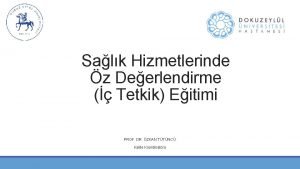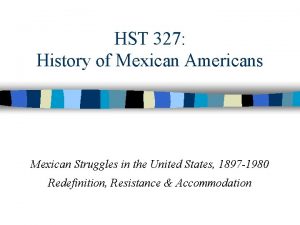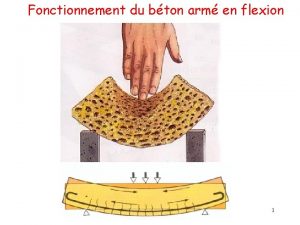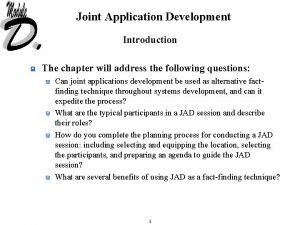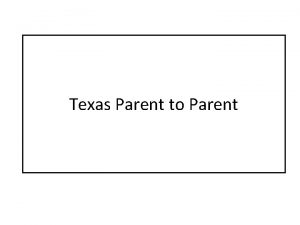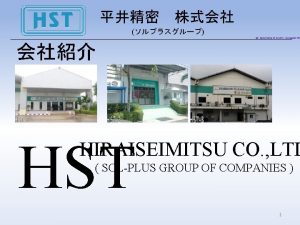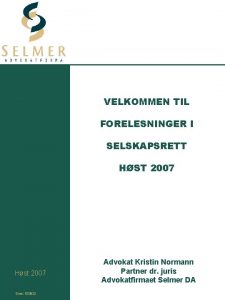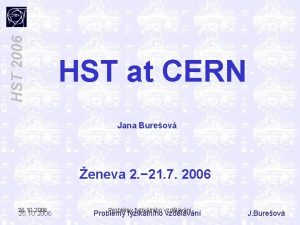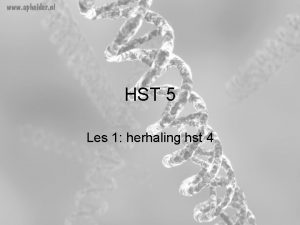JUNIOR DEVELOPMENT PARENT INFORMATION SESSION WHAT IS HST














- Slides: 14

JUNIOR DEVELOPMENT PARENT INFORMATION SESSION

WHAT IS HST? Structure and Purpose A voluntary organisation that exists for the benefit of competitive swimmer development in Highland. Committee and Lead Coach led. Enhances Club training to prepare swimmers for District and Scottish Squad training systems. Junior Development prepares swimmers for Highland Swim Team National Squad in the first instance however selection to other squads during the process is possible.

REFERRAL PROCESS TO JUNIOR DEVELOPMENT Clubs advised after the summer break that referrals are now welcome and the criteria is communicated. Swimmers are referred by CLUBS and selected according to specific criteria. Criteria has time and quality elements.

THE CRITERIA Swimmers aged between 8 – 12 yrs however 13 yr olds with a demonstrated pathway of development are not excluded – late developer theory. 10 yrs + tested on 200 m IM + 400 m F/C timed swims. 9 yr olds 100 m IM + 200 m F/C timed swims. 8 yr olds – no time bandings but quality element applies. Legal strokes, starts and turns. 75% + club attendance – commitment is paramount. This year a SNAGS plus 5% time is required.

Long Term Athlete Development (LTAD) What is it? A model for the development of athletes that takes cognisance of recommended skills development and volumes and intensities of training required to produce athletes for the international arena.

LTAD ETHOS Acknowledges it takes approximately 10 yrs or 10, 000 hours for talented athletes to achieve sporting excellence. There are no short cuts!! Establishes a clear swimmer pathway. Not following LTAD results in plateau or worsening of performance and ultimately drop out from the sport.

CURRENT SPORTS SYSTEM ISSUES IN BRITAIN TODAY Young athletes under-train and over-compete. Training in early years focuses on outcome (winning) rather than process. Chronological rather than biological age influences training and competition. Critical periods of accelerated adaptation are not fully utilised. Poor training between ages 6 – 16 cannot be corrected and swimmers never reach their potential.

LTAD FRAMEWORK FUNdamentals – basic movement literacy. (5 – 8 yrs for females/6 – 9 yrs for males) Swim. Skills – building technique. (8 – 11 yrs for females/9 – 12 yrs for males) Learning to Train – the bit in between! Teaching the principles of training – lane discipline, pace clock, effort levels, heart rates, training pace etc. Training to Train – building the engine. (11 – 14 yrs for females/12 – 15 yrs for males) Training to Compete – optimising the engine. (14 – 16 yrs for females/15 – 18 yrs for males) Training to Win – maximising the engine. (16 yrs + for females/18 yrs + for males)

HOW LTAD APPLIES TO JUNIOR DEVELOPMENT Swim. Skills – developing technique, learning to warm up and cool down, hydration and nutrition, recovery, relaxation and focusing. Training to Train – emphasis is on aerobic conditioning. High volume/low intensity training that cannot be best achieved in a limited timescale. Time commitment to training should increase significantly during this period.

HOW IS HST ADDRESSING LTAD IN RELATION TO THESE YOUNG SWIMMERS? Maximising access to pool time within the limits of the Highland wide network of clubs – supplementary sessions in Inverness. 4 sessions for A Squad and 1 for B squad. Continued liaison with Clubs by Lead Coaches.

JUNIOR DEVELOPMENT PROGRAMME 4 training days each for A and B squads. (Each day has two land training sessions and two pool sessions. ) A visit to the National Academy in Stirling or Aberdeen Sports Village for experience of Long Course training – by invite only. Compliments club programme by continued development of strength and technique during additional sessions available in Inverness

COPING WITH TRAINING DAYS Fluids, fluids!! Adequate nutrition – balance of carbohydrate to protein to fat – keep it the same just increase overall volume. They will be hungry!! Lunch boxes required – remember to include recovery snacks. Protein : Carbohydrate balance is very important for recovery. E. g. banana and a cereal bar. 40% reduction in performance if dehydrated. Fluid bottles should contain isotonic, water or non fizzy sugar free drinks during training sessions.

THE PARENT ROLE Support your young athlete – avoid a post mortem in the car!! Encourage adequate sleep, fluid and nutritional intake. Don’t interfere in the Coaching process!! It’s easy to watch from the side and be critical – you don’t know what they’ve been asked to do!! Offer support to the overall process by getting involved – it also keeps you better informed! If we all do a little it adds such positive value and it is the parents responsibility to chaperone – not the clubs! Help one another by sharing lifts. We all have busy lives!

THE BOTTOM LINE? To maximise potential swimmers need to have the time in the water – additional sessions are highly recommended. Club contact must continue – we take ultimate responsibility for technical development! Commitment needs to increase but not rushing in headlong! Build up gradually. The cost – monthly billing which includes training weekend costs still to be set.

